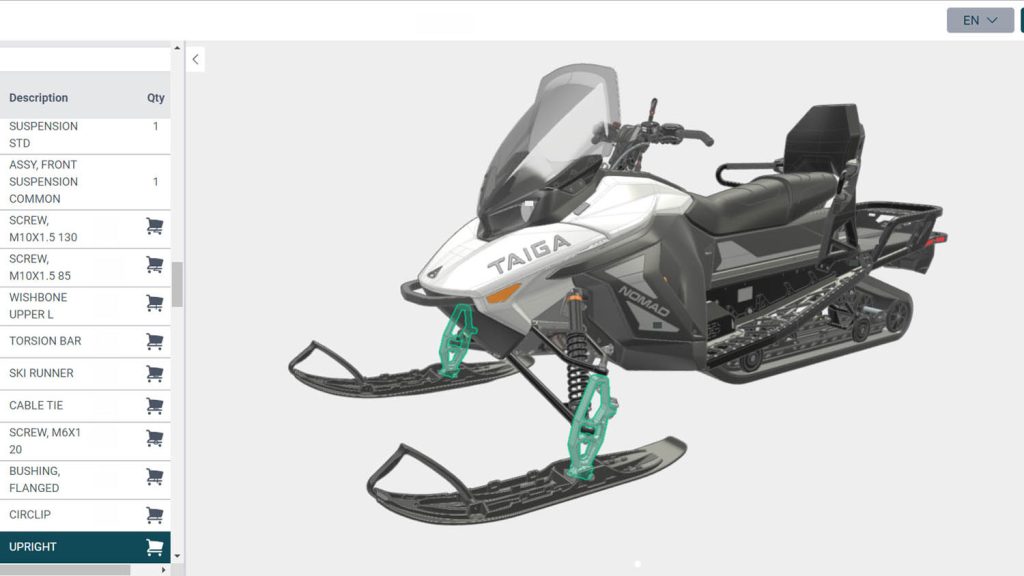Finding a way to document and market very expensive products without compromising on security is easier said than done. Emilie Eisenberg hears how Taiga Motors turned to software platform Zea for help
For electric powersport company Taiga Motors, creating a comprehensive parts catalogue was the natural next step in its design workflow, but protecting confidential data was just as important.
The Canadian off-road vehicle company, based in Montreal, is best known for its snowmobiles, electrifying the vehicles for a more sustainable experience.
A rise in the popularity of its products meant the company needed to quickly build out its product documentation, to provide concise, useful information about each vehicle for its customers and to simplify part ordering for its service partners.
Taiga reached out to fellow Canadian company Zea, which uses its 3D digital twin cloud platform designed for small and medium-sized manufacturers to create technical illustrations and interactive catalogues from 3D CAD models.
A crucial factor was that this can be done without compromising on security – something important for brands like Taiga, which heavily invests in its designs and wants to preserve its intellectual property (IP).
Catalogue generation
In the process of implementing a catalogue, the team at Taiga learnt how to structure service BOM metadata and 3D assets to match. Assistance from Zea helped the team map the catalogue generation process properly.
Taiga also needed the catalogue to identify which parts are eligible for aftermarket sale, and which are not. For example, some parts have high-voltage components that come with safety risks. Others are not practical to stock for distribution. Zea’s software allowed Taiga to grant visibility on a 3D model of available parts while making clear what is and isn’t saleable.
Zea produced a complete catalogue for Taiga’s entire Nomad collection of snowmobiles in a few days, using a rules-based system of IP protection, ensuring that sensitive motor and battery information remains confidential.
Instead of needing to create a lightweight version of each product variant, Taiga is able to use robust filters provided by Zea to exclude certain datasets. Zea allows Taiga to selectively mask parts that are too close to their protected IP to be shared as viewable 3D assets.
By using 3D renders to create the catalogue rather than drawing 2D illustrations, the graphic quality is ‘outstanding’ and helps convey the quality of the product, says Taiga co-founder and chief vehicle development officer Paul Achard.
“That being said, the high aesthetic quality does not get in the way of usability. The rendering is super-fast on the browsers we use, and it’s very easy for the user to drill down to the system or part of interest.”
Feedback from customers has been positive since the release of the Nomad catalogue.
Achard says of the collaboration: “Our priority was to give maximum transparency to our catalogue users while retaining very fast turnaround on catalogue updates. Zea has delivered fantastically on those objectives.”
This article first appeared in DEVELOP3D Magazine
DEVELOP3D is a publication dedicated to product design + development, from concept to manufacture and the technologies behind it all.
To receive the physical publication or digital issue free, as well as exclusive news and offers, subscribe to DEVELOP3D Magazine here






